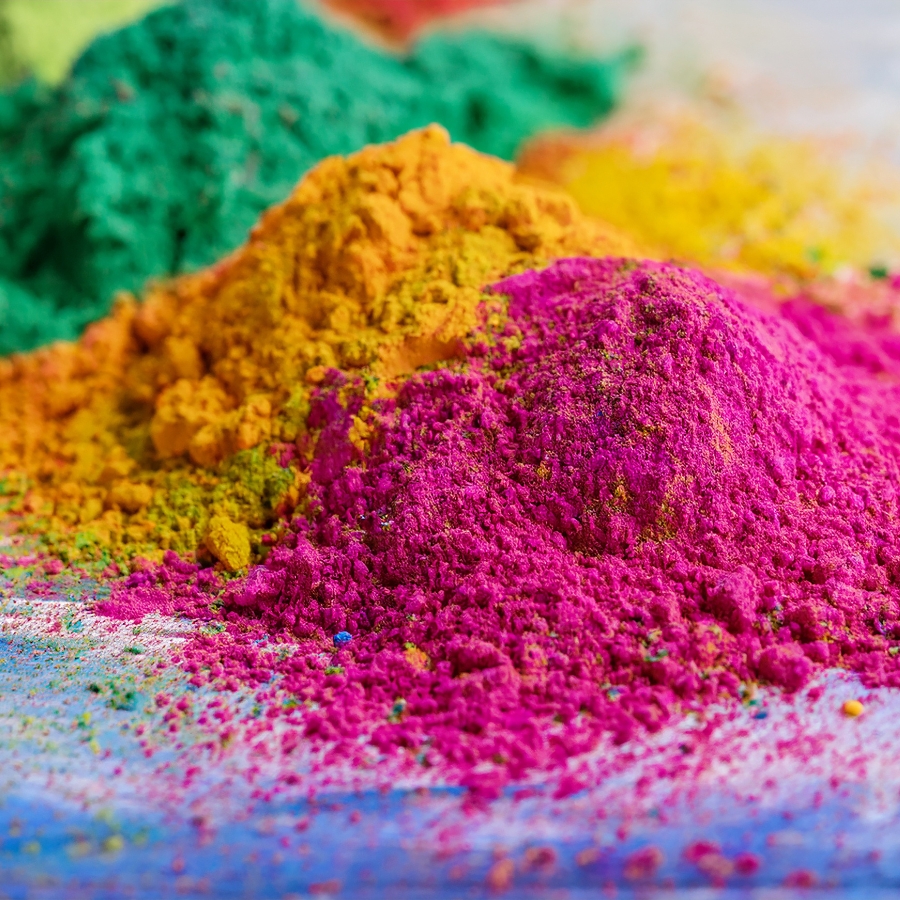
Miscibility
Miscibility refers to the ability of two or more substances to combine permanently and homogeneously. In liquids, this is essentially based on intermolecular interactions. Liquids with similar polarity are generally highly miscible, while those with very different polarities usually cannot be mixed. Oil and water are an example of this. Although they can be dispersed for a short time by mechanical energy, they separate into two phases again once the mixing tool is switched off.
The production of stable liquid-liquid mixtures often requires high shear forces. In addition, emulsifiers can be used to reduce the interfacial tension and facilitate the formation of finely distributed droplets. Without these additives, coalescence processes occur, leading to re-separation.
In solid-liquid systems, wettability is of central importance. Hydrophobic powders are difficult to wet with water because high interfacial tensions and low adhesive forces develop. Hydrophilic powders behave differently. Here, an impacting drop is quickly absorbed, but often without sufficient lateral distribution in the particle bed. Although the mixer can introduce the liquid, it does not always support its spread within the bulk material.
In powder-powder mixtures, particle properties such as grain size, density, surface energy, moisture content, magnetism or electrostatic charge influence miscibility. Widely varying particle sizes promote segregation processes. Although a high mixing quality can be achieved during mixing, the components tend to segregate during filling or transport. This behaviour results from percolative effects, density sorting or the formation of cavities in the contact area of the larger particles.
The addition of small amounts of liquid can increase the internal friction in the bulk material and thus reduce the tendency to segregate. This effect is referred to as wet granulation in the initial stage. In other cases, moistened flow aids such as silicon dioxide or magnesium stearate can modify the particle surfaces and thus change the flow behaviour. Whether these substances promote miscibility depends on the system and must be tested empirically.
Miscibility
Hydrophobic powders are difficult to mix with water because high interfacial tensions and low adhesive forces develop. Hydrophilic powders behave differently.
Miscibility refers to the ability of two or more substances to combine permanently and homogeneously. In liquids, this is essentially based on intermolecular interactions. Liquids with similar polarity are generally highly miscible, while those with very different polarities usually cannot be mixed. Oil and water are an example of this. Although they can be dispersed for a short time by mechanical energy, they separate into two phases again once the mixing tool is switched off.
The production of stable liquid-liquid mixtures often requires high shear forces. In addition, emulsifiers can be used to reduce the interfacial tension and facilitate the formation of finely distributed droplets. Without these additives, coalescence processes occur, leading to re-separation.
In solid-liquid systems, wettability is of central importance. Hydrophobic powders are difficult to wet with water because high interfacial tensions and low adhesive forces develop. Hydrophilic powders behave differently. Here, an impacting drop is quickly absorbed, but often without sufficient lateral distribution in the particle bed. Although the mixer can introduce the liquid, it does not always support its spread within the bulk material.
In powder-powder mixtures, particle properties such as grain size, density, surface energy, moisture content, magnetism or electrostatic charge influence miscibility. Widely varying particle sizes promote segregation processes. Although a high mixing quality can be achieved during mixing, the components tend to separate during filling or transport. This behaviour results from percolative effects, density sorting or the formation of cavities in the contact area of the larger particles.
The addition of small amounts of liquid can increase the internal friction in the bulk material and thus reduce the tendency to segregate. This effect is referred to as wet granulation in the initial stage. In other cases, moistened flow aids such as silicon dioxide or magnesium stearate can modify the particle surfaces and thus change the flow behaviour. Whether these substances promote miscibility depends on the system and must be tested empirically.
amixon® has many dispersion and wetting processes at its disposal and can demonstrate these in its technical centre.
